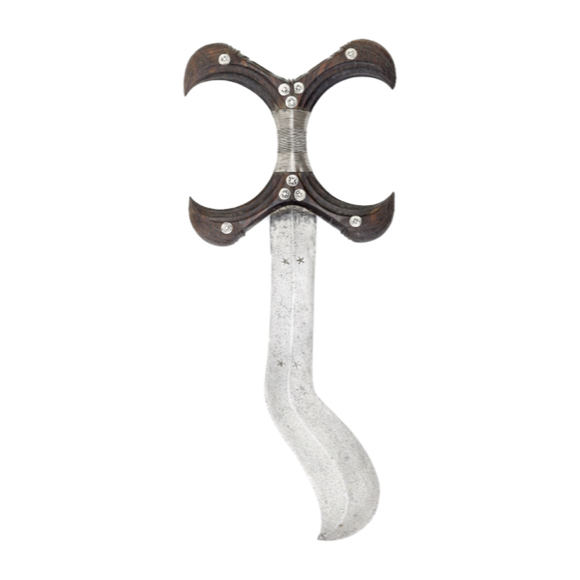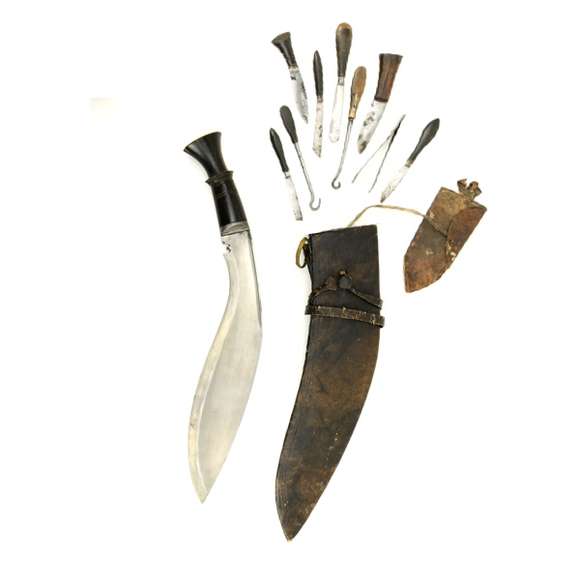These handsome daggers were worn by the nomadic Hadendoa people, their name has been interpreted as meaning…
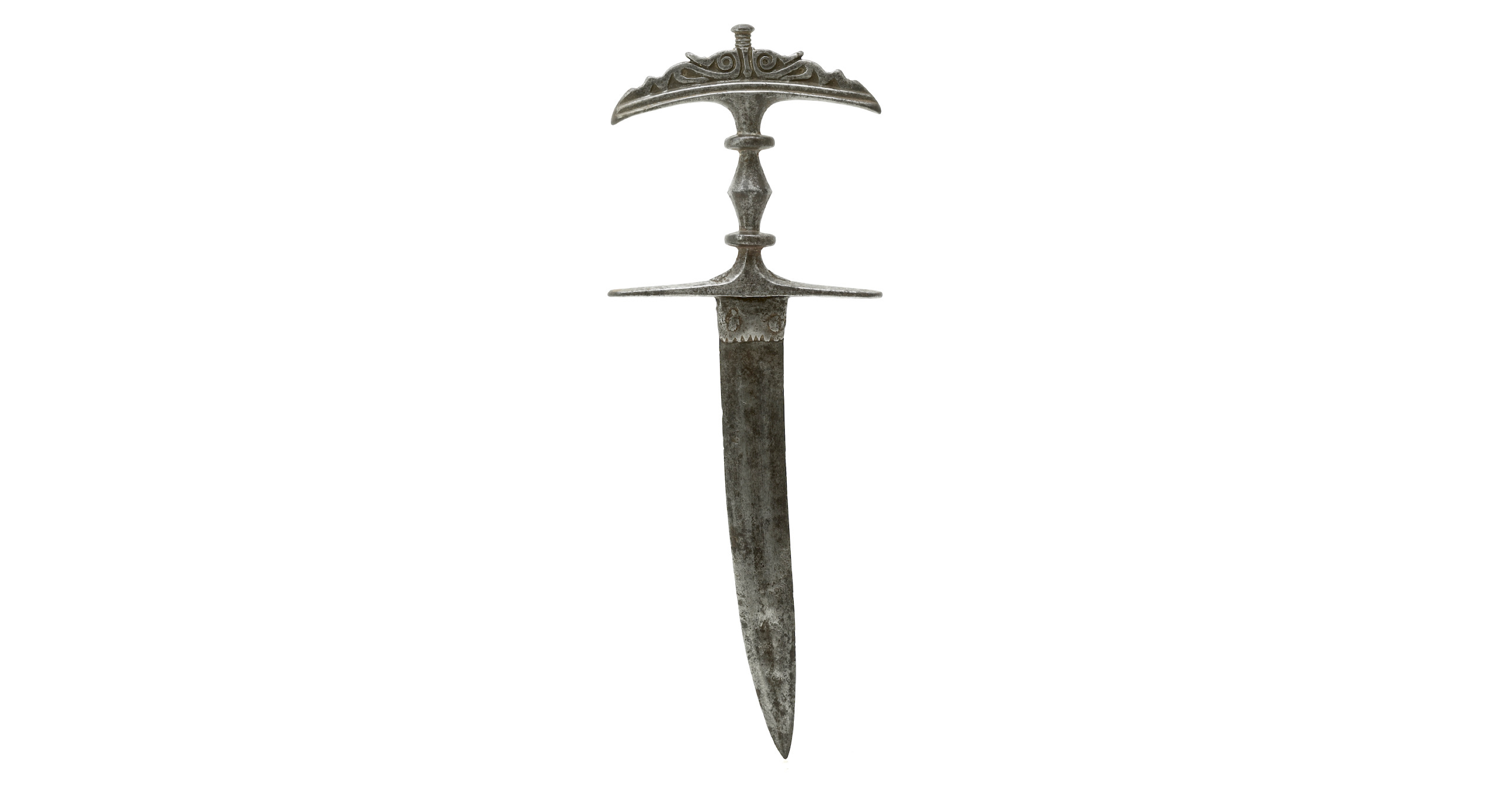
32.3 cm
20.3 cm
Base 3 mm
Middle 3 mm
Base 28 mm
Middle 27 mm
412 grams
Just under the first disc on the handle section.
Forge folded steel, iron.
Hindu Kush, present-day Afghanistan
19th century
From a Scandinavian private collector
Introduction
This type of dagger is quite ancient. It appears among others on stone reliefs in Mukteśwara, a 10th-century Hindu temple dedicated to Shiva located in Odisha, India.1 A variation of it seems depicted in the Ain-i-Akbari (Persian: آئینِ اکبری) or "Administration of Akbar" of circa 1590 and described as a katarah.

A similar dagger worn by a warrior. 10th century.
Mukteśwara temple. Odisha, India.
The form somehow survived longer in the Hindu Kush in present-day Afghanistan than anywhere else.2 They were worn by the Kalash people who practice an early form of Hinduism.

A similar dagger worn by a Kalash man, Hindu Kush area.
Illustrated London News, March 30, 1963.
"At the pshala Kafir is always on the look-out for thieves and enemies day and night. He never takes off his dagger, even at night, and during the day may constantly be seen watching his property fully armed with matchlock and other weapons." 3
-Sir George Scott Robertson, 1900
Two, or earlier form with a leaf-shaped blade appear in Egerton, which he lists as being from Nepal.4
Notes to introduction
1. Thomas E. Donaldson; Hindu Temple Art of Orissa, Volume Three. Leiden, Brill. 1987. Figure 4260.
2. Dmitry Miloserdov; Edged Weapons of Afghanistan: 19th-early 20th c. 2019. Pages 294-297.
3. Sir George Scott Robertson; Kafiristan and its people. 1900. Page 38.
4. Lord Egerton of Tatton: Indian and Oriental Arms and Armour. Dover Publications; Revised edition, 2002. Plate IX & page 102, number 345.
Description
A better-than-usual example. The slightly curved blade is forge folded, some of the layering clearly visible. It has a groove in the center of the blade. The hilt is of typical H-shape, but where most pommels remain undecorated this one is carved with two stylized facing animals, very archaic in style.
The orthodox nature of the dagger can also be seen when looking at the blade-hilt junction: The blade held by langets to which it is riveted with two iron rivets. The langets are in turn are held by rods that go through the guard and are peened on the other side. A similar construction can be seen on Vijayanagara katar of the 16th century.
The handle section consists of a peaked center with 12 facets and two discs above and below it. It provides a firm grip with the hand tucked between the large guard and pommel.
Muhammad Hayat Khan Khattar (1833–1901) is depicted wearing one of these daggers in a lithograph that was published in the Illustrated London News in 1879.1 He was awarded the Most Exalted Order of the Star of India for his service.
Notes
1. Dmitry Miloserdov; Edged Weapons of Afghanistan: 19th-early 20th c. 2019. Page 298.


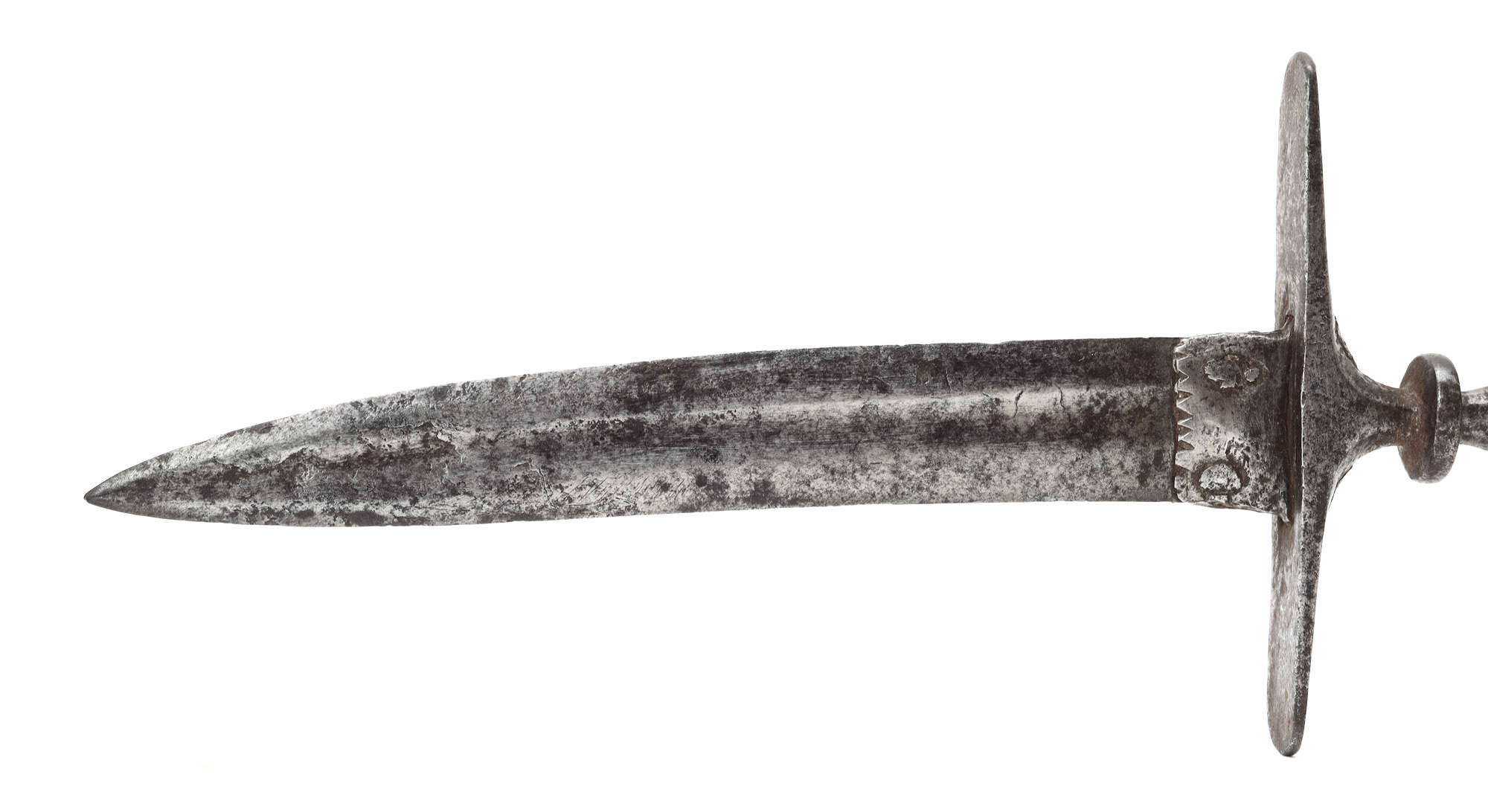

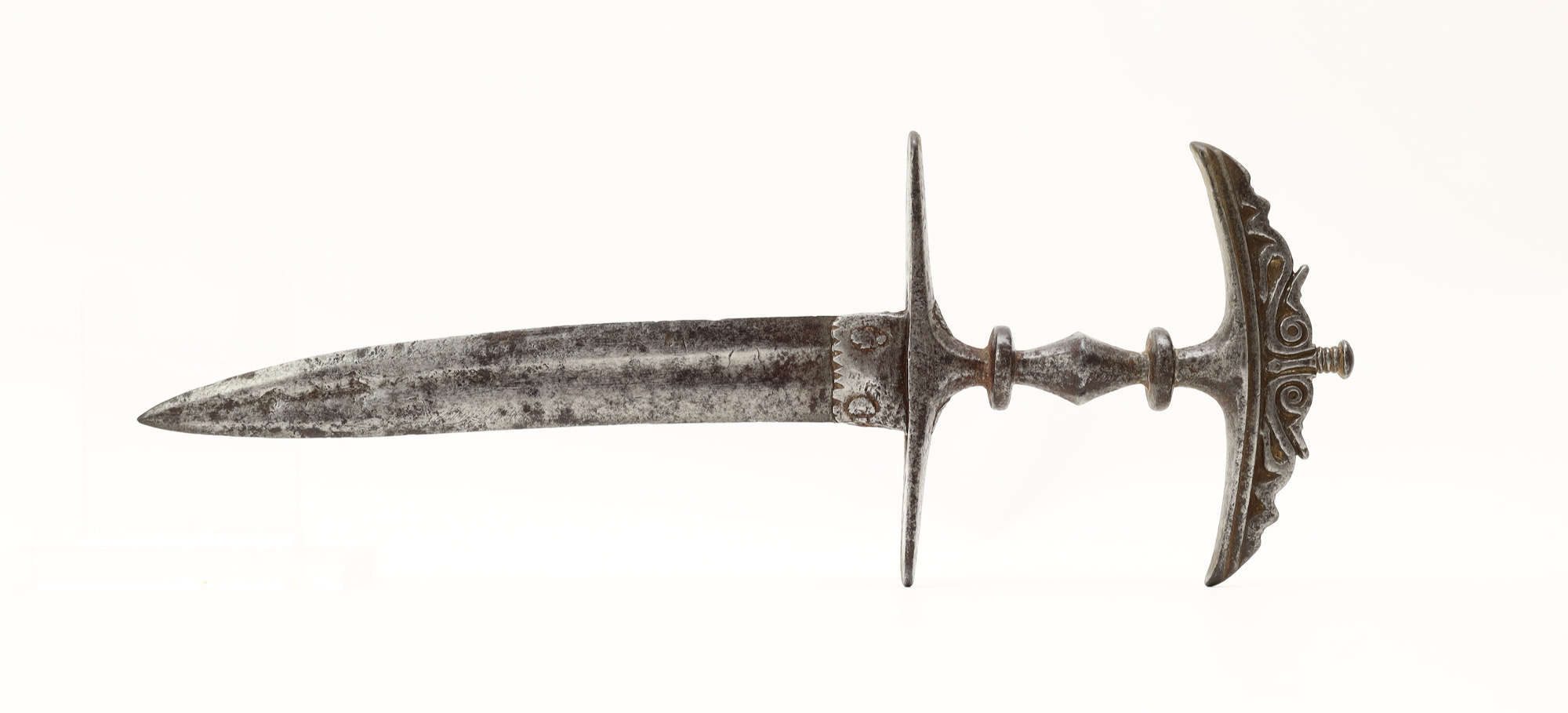
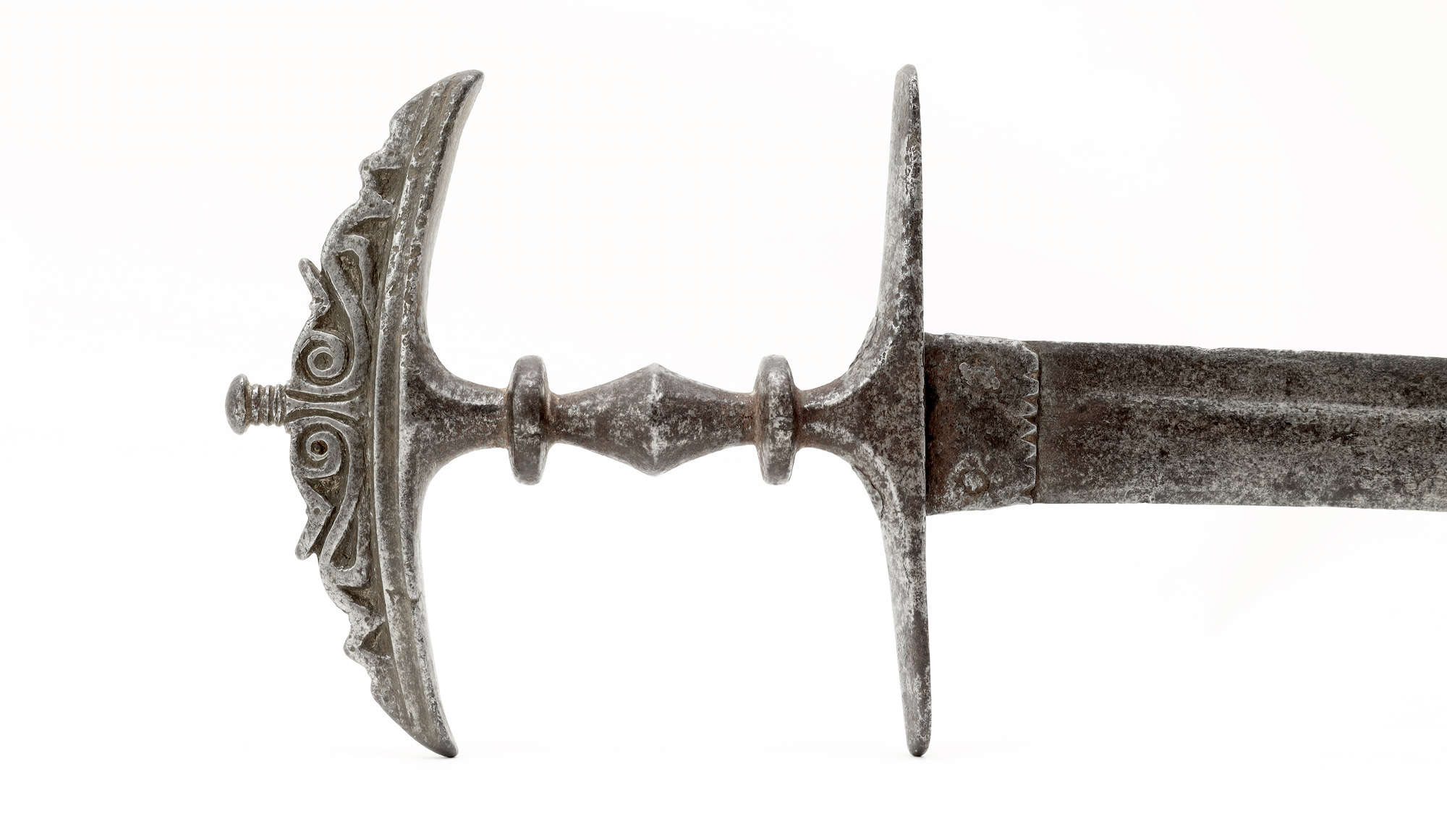


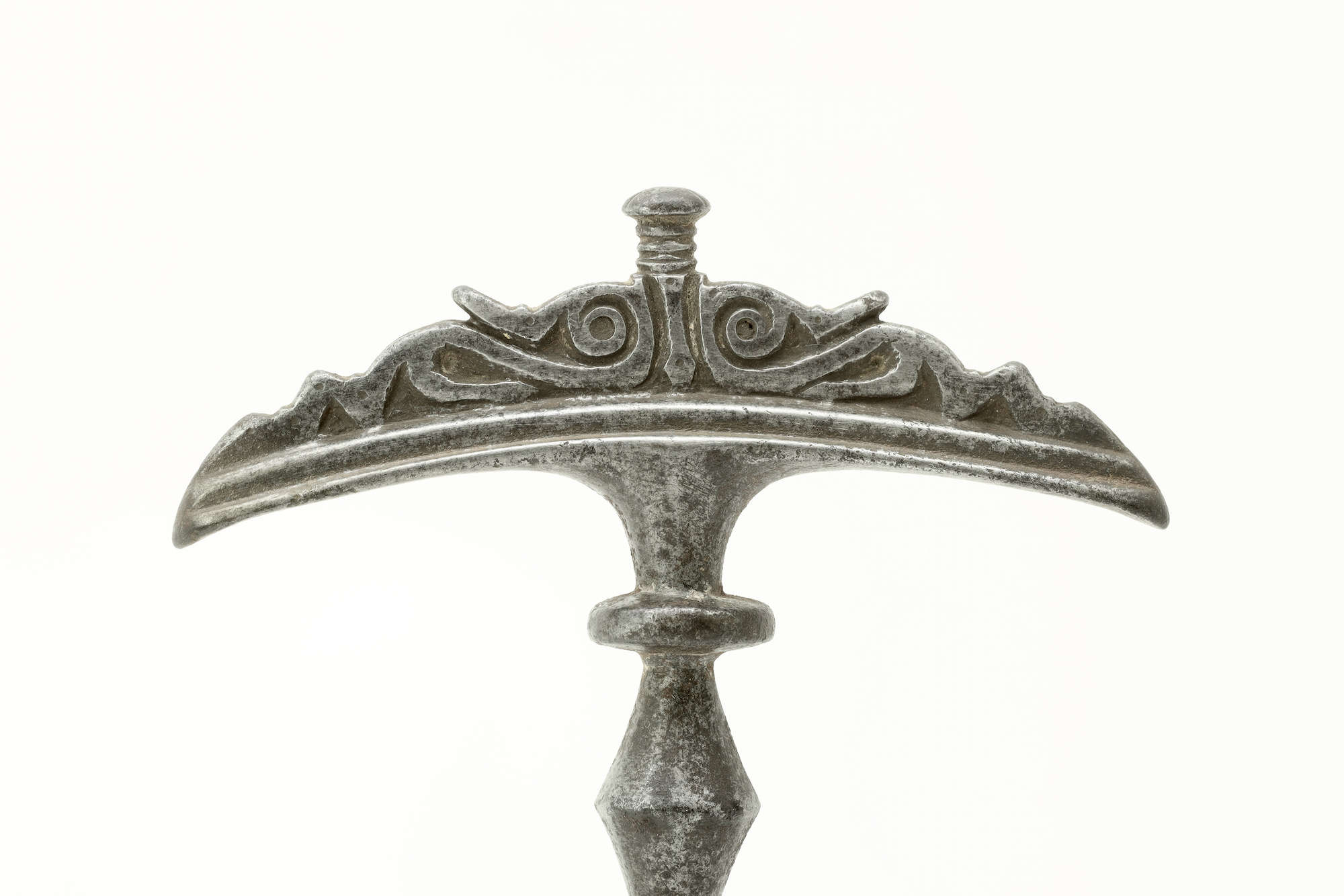
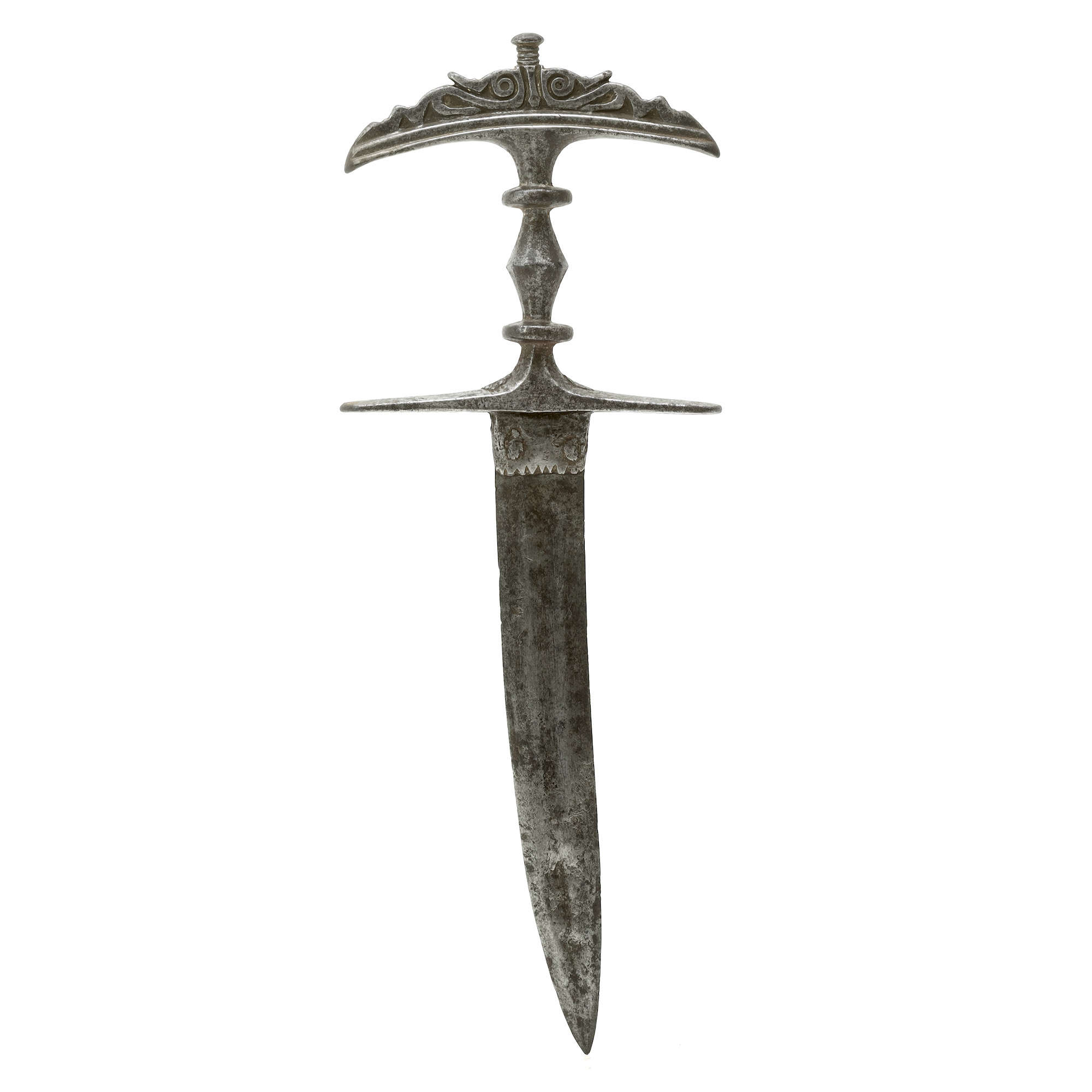
A rare type of dagger from South Kalimantan, loosely based on Islamic daggers seen worn by traders.
With iron, silver overlaid hilt. Its associated scabbard features fine quillwork.
Thought to have been presented by the Royal House of Nepal.
The scabbard carved as to closely mimic a tooled leather scabbard.

